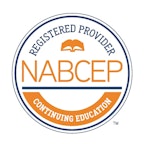Megawatt Design

About this course
Learning Objectives
- Project Qualification and Site Selection
- Equipment Selection
- Software Tools to Help the Design Process
- Optimizing System Design
- Fire Code and Structural Connections
- NEC Application and Utility Interconnection
- PV Installation Safety and Operations & Maintenance
- Permitting and Preparing Your Submittal Package
Course outline
Welcome • 7 assignments
Orientation Materials
- Live Office Hours - Thursday, March 20th - 10-10:25am PST // 1-1:25pm EST
- MW Course Introduction - Randy (05:50 minutes) Preview
- Welcome to Megawatt Design! (.pdf)
- [ACTION REQUIRED] HelioScope Free Trial
- Set up email notifications and your student profile
- Optional: Join our LinkedIn group
- Introduce yourself on the discussion board
Module 1 • 12 assignments
Project Lifecycle, Site Assessment and Investigation
- Module 1: Intro Video (01:48 minutes)
- Project Design Lifecycle (24:27 minutes) Preview
- Project Design Lifecycle PDF (.pdf)
- Project Design Lifecycle Table PDF (.pdf)
- Site Assessment and Investigation (.pdf)
- Site Assessment and Investigation (39:22 minutes) Preview
- Successful Rooftop Photovoltaics (.pdf)
- Optimizing for Speed (.pdf)
- From kW to MW (.pdf)
- Three Phase Power Calculations (.pdf)
- Discussion Topic: Site Assessment & Investigation
- Rooftop Site Assessment Checklist (.pdf)
Module 2 • 12 assignments
Equipment Selection
• Central/string/micro
• Transformer based vs. transformerless
• PID and Capacitive discharge
• Discuss array to inverter sizing strategies
• Monitoring and SCADA
• Tracking systems
• BOS strategies
- Module 2 Intro Video (03:53 minutes)
- Module 2: Module Selection (20:52 minutes) Preview
- Module 2: Module Selection PDF (.pdf)
- Module 2: Racking and Power Electronics (37:58 minutes)
- Module 2: Racking and Power Electronics PDF (.pdf)
- Module 2 - Electrical Equipment Selection (23:42 minutes)
- Module 2: AC Electrical Gear PDF (.pdf)
- Data Acquisition System Equipment Selection (20:17 minutes)
- Module 2: DAS PDF (.pdf)
- Reading and Resources (.zip)
- Cooper Pad Mount Transformer Specifications (.pdf)
- Discussion Topic: Equipment Selection
Module 3 • 9 assignments
Software Tools to Help the Design Process
• Show different preliminary design tools
• Show/discuss energy estimation tools
• Manufacturer tools
• Drawing programs
- Module 3 Intro (03:32 minutes)
- Module 3 Lesson - Software Tools (24:28 minutes)
- Module 3 Lesson - Software Tools (.pdf)
- Reading and Resources (.zip)
- Helioscope Training Videos
- Helioscope Rooftop Layout Exercise (.pdf)
- Helioscope Rooftop Layout Report Upload
- Solar Software Tools List - Google Sheet
- Discussion Topic: Solar Design Software
Module 4 • 8 assignments
Optimizing System Design
• Value engineering conductors on dc side
• Array layouts and energy impact
• 1,000 V vs. 600 V
• DC to ac ratios
• Wire management in the design
• Designing with O&M in mind
- Module 4 Introduction (02:50 minutes)
- Module 4 - Optimizing System Design (44:38 minutes)
- System Optimization (.pdf)
- Reading and Resources (.zip)
- Resources: HelioScope Optimization Webinar PDF (.pdf)
- Module 3 Homework Solution (.pdf)
- Discussion Topic: Optimal Inverter Loading
- Inverter Loading Ratio Analysis (.pdf)
Module 5 • 13 assignments
Fire Code and Structural Considerations
- Module 5 Introduction (02:34 minutes)
- Module 5 lesson - Fire Code PDF (.pdf)
- Fire Code (27:16 minutes)
- Module 5 Lesson - Structural (.pdf)
- Structural Code and Considerations (47:25 minutes)
- UL2703 and 1703 presentation (48:26 minutes)
- Resources: UL1703/2703 webinar PDF (.pdf)
- Resources: Week 5 Articles and Papers for reading/review (.zip)
- Resources: CA Fire Code
- Update Helioscope Design (.pdf)
- Upload Updated Helioscope Design
- Discussion Topic: Fire Code Interpretations
- Module 4 Solution (.pdf)
Module 6 • 18 assignments
NEC & eBOS Considerations
- Module 6 Introduction (03:39 minutes)
- Grounding and Bonding General NEC Requirements (23:16 minutes) Preview
- Grounding and Bonding Article 690 2017 (22:29 minutes)
- Read: PDF version of Grounding and Bonding General Requirements (.pdf)
- Read: PDF version of Grounding and Bonding 2017 NEC (.pdf)
- Resources: Module 6 Articles and Papers for reading/review (.zip)
- Conductor sizing lesson (01:19:48 hours)
- Conductor Sizing Lesson - PDF (.pdf)
- Conductor Sizing Assignment (.pdf)
- Optimal Conductor Sizing Lesson (27:48 minutes)
- Optimal Conductor Sizing (.pdf)
- Conductor Sizing Quiz
- Reducing Conductor Lengths - Location, Leapfrog, Y Connectors (.pdf)
- Reducing Conductor Lengths - Location, Leapfrog, Y Connectors (19:48 minutes)
- Locating Inverters (.pdf)
- Locating Inverters (33:32 minutes)
- Module 5 Helioscope HW Solution (.pdf)
- Discussion Topic: Locating Electrical Equipment
Module 7 • 9 assignments
NEC Application and Utility Interconnection
• Review NEC interconnection rules
• Discuss different interconnection methods
• Review design and drawing requirements
- Module 7 Introduction (02:00 minutes)
- Module 7 Lesson: Utility Interconnections (23:07 minutes)
- Resource: Dedicated new service example (.pdf)
- Resources: Module 7 Lesson PDF (.pdf)
- Module 7 Interconnection and Code (18:05 minutes)
- Resources: Module 7 Articles and Papers for reading/review (.zip)
- Module 7 Helioscope SLD Exercise & Upload
- Link to Week 6 Conductor Sizing Quiz Solutions - Google sheet
- Discussion Topic: Supply side connections
Module 8 • 12 assignments
Commissioning & Electrical Testing
- Module 8 Introduction (01:38 minutes)
- Module 8 Lesson Part 1 (24:38 minutes)
- Module 8 Lesson Part 2 (25:00 minutes)
- Module 8 Lesson - Arc Flash (17:57 minutes)
- Resources: Week 8 Lesson PDF (.pdf)
- O&M tools intro (02:16 minutes)
- O&M tests - setup (05:02 minutes)
- IRT testing (05:51 minutes)
- IV curve tracing (04:31 minutes)
- Resources: Module 8 Articles and Papers for reading/review (.zip)
- Module 7 SLD Solution (.pdf)
- Discussion Topic: Commissioning & Electrical Testing
Module 9 • 11 assignments
Permitting and Preparing Your Submittal Package
- Module 9 Introduction (02:02 minutes)
- Permitting and Plans (46:17 minutes)
- Resources: Module 9 Lesson PDF - Permitting and Plans (.pdf)
- Read: SP2.5 Plan Sets (.pdf)
- Read: SP3.4 CAD Models (.pdf)
- Drawing Sets overview (19:03 minutes)
- Sample Plan Set - Carport (.pdf)
- Sample Plan Set - Ground Mount (.pdf)
- Sample Rooftop Plan Set (.pdf)
- Drawing Sheet List and Notes (.pdf)
- Discussion Topic: Permitting & Plans
Module 10 • 2 assignments
Ground Mount Design
- Ground Mount Design (.pdf)
- Group Discussion: Ground Mount Design
Conclusion • 5 assignments
Feedback and Additional Resources
- Group Discussion: Course Wrap-up
- 1 Year of Access to Course Materials
- Feedback: 2-minute Exit Survey
- Consider Joining as a HeatSpring Member
- Certificate of Completion: Request a Certificate
Continuing Education Units
Approved for the following CEUs
- NABCEP Advanced Credit Hours
- NABCEP JTA
- NABCEP RE Elective
- NABCEP NEC
- 30 AIA LU/HSW Credits
- NABCEP PV Associate Renewal
Approved NABCEP CEU Hours
| NABCEP Credential | Advanced Hours for Exam | Recertification CEU Hours | NEC | JTA | RE Elective | Building or Fire Code |
|---|---|---|---|---|---|---|
| 30 | 30 | 6 | 14 | 12 | 2 | |
| 0 | 12 | 0 | 0 | 0 | 0 | |
| 30 | 30 | 6 | 14 | 12 | 2 | |
| 30 | 30 | 6 | 7 | 12 | 2 | |
| 16 | 30 | 0 | 18 | 12 | 2 | |
| 16 | 30 | 6 | 7 | 12 | 2 | |
| 0 | 6 | 6 | 0 | 0 | 0 |
NABCEP Registered Provider

This course counts towards the training requirements for taking NABCEP professional certification exams and CEUs for renewing all certifications.
Instructors

Will Lindsay
Will Lindsay has been working in the solar industry for two decades. He worked for Tesla's solar energy division for 10 years before starting work with Bay Area-based Sol Rebel, a firm that provides engineering and consulting services for the solar industry and project owners. Will has worked on thousands of residential, commercial and utility-based solar PV projects...

Randy Batchelor
Randy Batchelor is a licensed Electrical Engineer in California and is a NABCEP Certified PV Professional. He has experience with projects ranging from small off-grid power systems to utility-scale plants connected at medium Voltage. Randy has been working in the solar industry since 2006 and has been involved in the design and construction of hundreds of PV systems,...
Frequently asked questions
Full FAQHow does this course work?
How long do I have access to the materials?
What system sizes is this course intended for? Does it cover ground mounted systems in detail?
A number of considerations for ground mount systems are also discussed, including: racking systems, fire clearances and roads, and overall system architecture (AC versus DC, etc.). The resources provided cover topics relevant to ground mount systems in more detail.
The instructors have years of experience designing ground mount systems. They are happy to address any participant questions about ground mount systems and provide additional resources for learning more.




